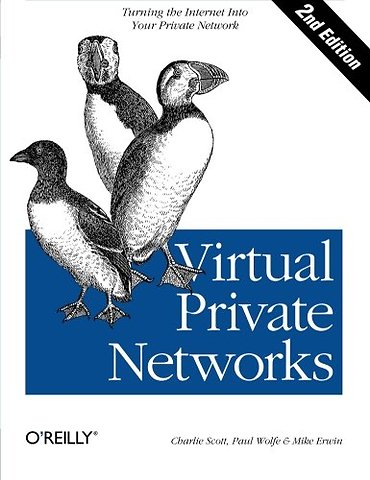Virtual Private Networks 2e
Paperback Engels 1999 9781565925298Samenvatting
Historically, only large companies could afford secure networks, which they created from expensive leased lines. Smaller folks had to make do with the relatively untrusted Internet. Nowadays, even large companies have to go outside their private nets, because so many people telecommute or log in while they're on the road. How do you provide a low-cost, secure electronic network for your organizationThe solution is a virtual private network: a collection of technologies that creates secure connections or "tunnels" over regular Internet lines--connections that can be easily used by anybody logging in from anywhere. A number of products now exist to help you develop that solution.This book tells you how to plan and build a VPN. It starts with general concerns like costs, configuration, and how a VPN fits in with other networking technologies like firewalls. It continues with detailed descriptions of how to install and use VPN technologies that are available for Windows NT and Unix, such as PPTP and L2TP, Altavista Tunnel, Cisco PIX, and the secure shell (SSH).New features in the second edition include SSH, which is a popular VPN solution for Unix systems, and an expanded description of the IPSec standard, for which several vendors have announced support.Topics include:
-How the VPN compares to other available networking technologies
-Introduction to encryption, firewalls, the IPSec standard, and other technologies that let VPNs work
-Point to Point Tunneling Protocol (PPTP) and L2TP
-The Altavista Tunnel
-The Cisco PIX Firewall
-Secure Shell (SSH)
-Maintenance and troubleshooting
Specificaties
Lezersrecensies
Inhoudsopgave
Anderen die dit boek kochten, kochten ook
Rubrieken
- advisering
- algemeen management
- coaching en trainen
- communicatie en media
- economie
- financieel management
- inkoop en logistiek
- internet en social media
- it-management / ict
- juridisch
- leiderschap
- marketing
- mens en maatschappij
- non-profit
- ondernemen
- organisatiekunde
- personal finance
- personeelsmanagement
- persoonlijke effectiviteit
- projectmanagement
- psychologie
- reclame en verkoop
- strategisch management
- verandermanagement
- werk en loopbaan







